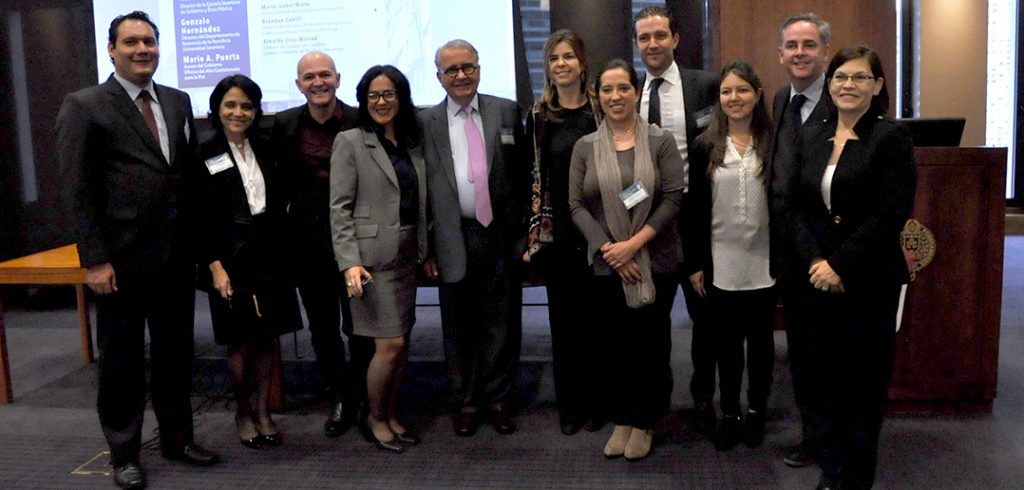With the extremely close vote (about a 1 percent difference) coming on the heels of the Brexit vote and amidst a heated American election, comparisons to other polarized nations were made in the media.
But while the Colombian vote shared similarities, it was unique to that country, said several experts attending a large public event on Nov. 1 at Fordham that was entirely in Spanish, by design, to reach out to the Colombian community. The talk was sponsored by Fordham’s Institute of International Humanitarian Affairs (IIHA) in cooperation with Latin American and Latino Studies department and the Fordham College at Rose Hill assistant dean’s office.
“There are three specific characteristics that make the Colombian conflict a very different place than other parts of the world,” said Luis Fernando Álvarez Londoño, S.J. vice rector of Pontificia Universidad Javeriana, the Jesuit university in Bogotá, Colombia. “First is drug trafficking, second is social inequality, and third is corruption. Even though these three things take place in different parts of the world, in Colombia they’re combined.”
Brendan Cahill, IIHA’s executive director, concurred.
“When you lack the rule of law, it allows for illegal crops. And that becomes a vicious cycle,” said Cahill. “To replace the income for someone growing illegal crops is not just apples to apples. And that social inequality has to be addressed.”
Father Álvarez Londoño and other panelists noted that while the vote may not have been in favor of the peace accord, the cease-fire has held as negotiations continue. He added that he supports the process, but is more concerned about how peace will be maintained should an accord be reached. For that he sees a direct role for the Jesuits, specifically through education.
Gonzalo Hernández, director of the economics department at Javeriana, said that the vote was not split along class lines. He said the vote was influenced more by geography, with those near the conflict voting “Yes” and those away from the dangerous areas voting “No.”
Among elites, he said that there is a rural-versus-urban divide.
“I know that this is reductionist, but those against the agreement in the rural areas are landlords,” he said. “They would eventually be more affected, because the most important economic component of the agreement says that some of that land is going to be redistribute—and that’s a big deal.”
Through Colombia’s Office of the High Commission for Peace, Mario A. Puerta, negotiated the accord that was voted on. He did not view the “No” vote as a complete setback, but rather a part of a process that could have been skipped entirely by President Juan Manuel Santos. Santos was awarded the Nobel Peace Prize last month for his efforts.
“Constitutionally he was entitled to have implemented the agreement on his own, but he felt that the importance of the decision was something that had to be consulted to the people,” he said.
Puerta said that it was important to bear in mind that 62 percent of those eligible to vote did not vote—one of the highest abstention rates in more than 20 years.
“We have to assume this as an opportunity for improving what has already been achieved and finding the means for incorporating criticisms,” he said. “The supporters of the agreement are so strong that, even though they got a negative result, their strength is stable. The most important thing is that the bilateral cease fire has been maintained.”


